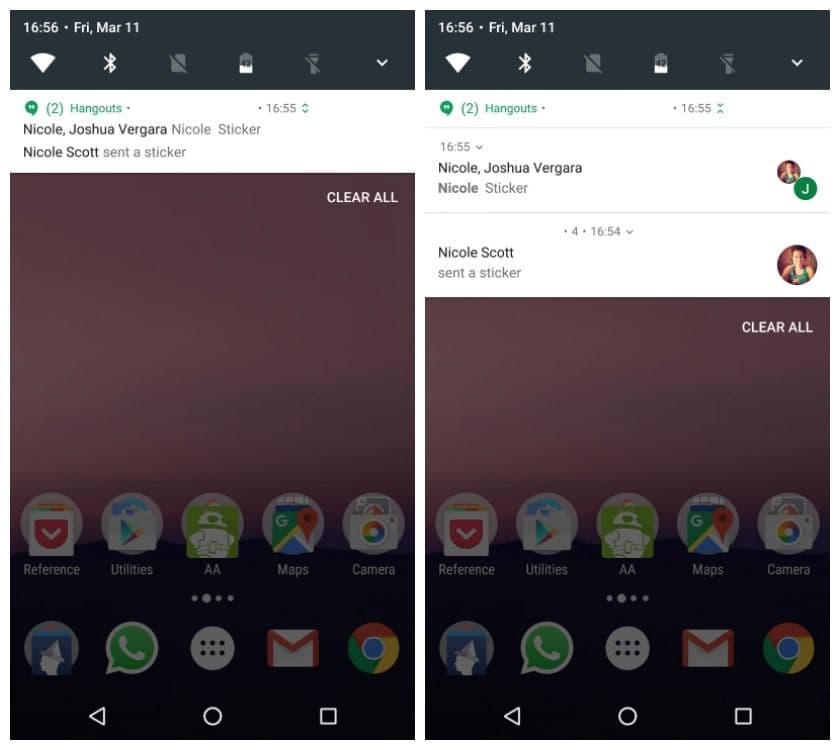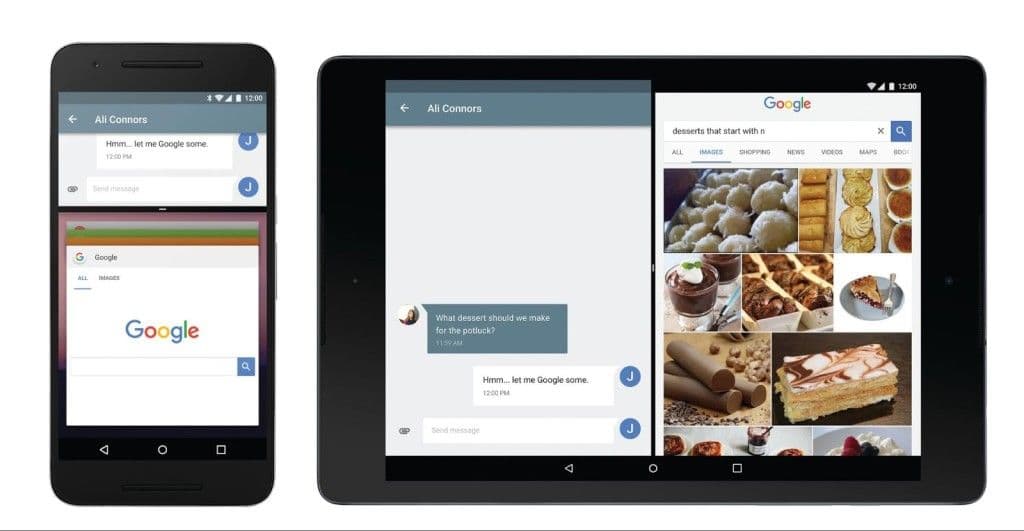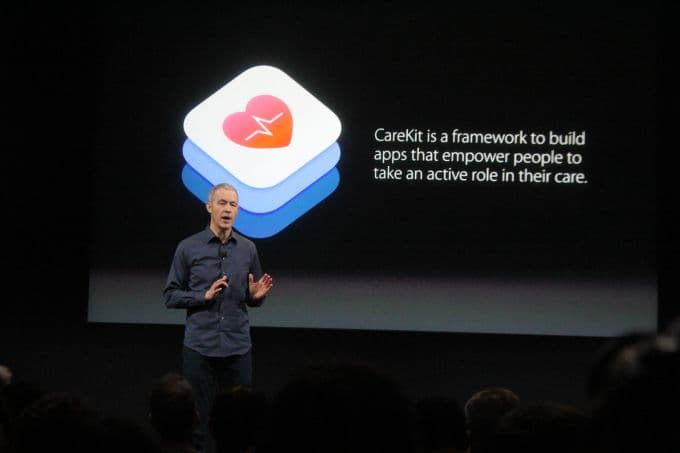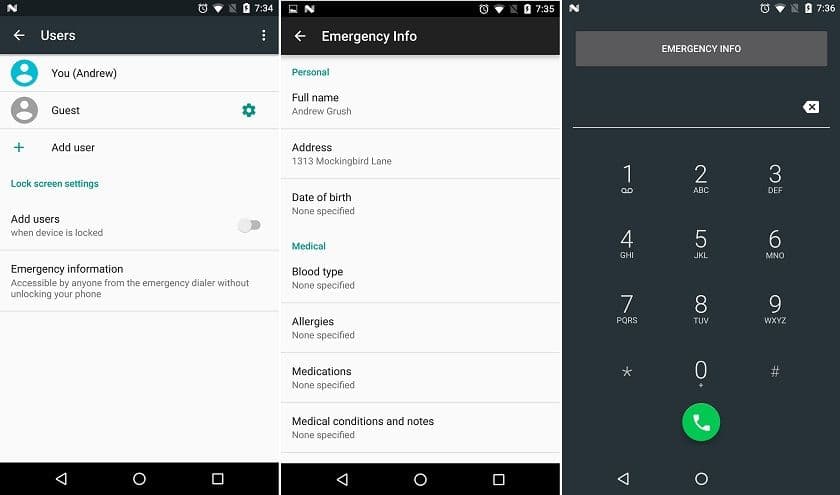Apple, Google, and the Future of Mobile Marketing
Published on March 22, 2016/Last edited on March 22, 2016/6 min read


Todd Grennan
Content Production Principal, Content Marketing at BrazeWhen Apple and Google talk, the mobile world listens.
With a combined 98% of the mobile operating system market, every product launch, every OS tweak from these brands has the potential for a major effect on mobile as a whole. In recent weeks, both Apple and Google have made significant moves: Google on March 9 with the release of a developer preview of the newest version of its mobile OS, Android N; and Apple with a March 21 event highlighting new products (including a new version of the iPhone and iPad Pro) and a new iteration of its iOS 9 operating system.
The full impact of these developments is still very much up in the air, especially in the case of Android N, which will likely change before a final version is released later this year. But these parallel announcements did serve to showcase a number of common, mobile-specific themes that marketers will want to keep an eye on.
1. The coming app (and message) overload
More apps keep launching, but our attention spans aren’t getting any longer. There were more than 3 million apps available for download on Google Play and Apple’s App Store at the end of 2015. But while the average person uses more than 26 apps each month, 80% of their time is spent on their top three apps, making it harder for any new app to build and maintain an audience. Messaging can help to drive stronger engagement and retention, but it’s susceptible to the same issues—after all, if a customer is getting regular messages from all 26 apps they use in a month, that will make it more difficult for your messages to stand out. At a certain point, we’re going to reach the limits of people’s attention (and patience).

Grouped notifications on Android N (Source: Android Authority)
Android N shows that Google is taking this situation seriously. The new version of Android includes support for grouped notifications, making it possible for users to more easily manage a high number of notifications. With grouped notifications, users will see which apps have messaged them and will have the option to expand a message group to see and respond to individuals notifications. If this approach catches on, brands that use send-time optimization to increase the chances that a customer sees and engages when a message arrives will have a major advantage.

Android N’s multi-window support (Source: Android Developers Blog)
Android N is also expected to include multi-window support, which allows multiple apps to be on the screen at the same time on smartphones and tablets. True multi-tasking has traditionally been difficult on mobile, because only one app can be on the screen at any one time. However, Android’s multi-window support could be the first step toward an app experience closer to what’s currently seen on laptop and desktop computers, where it’s possible to move seamlessly between different windows. That could make it possible for more apps to get more regular use, especially brands that take advantage of the growing platform economy by partnering with popular, complementary apps to encourage customers to use both in tandem.
2. Health initiatives make mobile more intimate… and make privacy a bigger issue
This month, both Android and Apple highlighted new initiatives focused on using mobile devices to improve personal health.

Apple COO Jeff Williams announcing CareKit (Source: TechCrunch)
Building on last year’s announcement of ResearchKit, which allows medical institutions to leverage Apple devices to conduct health-related research, Apple launched CareKit, which makes it possible for people with chronic illnesses to track their symptoms using mobile devices, with the goal of improving health outcomes. In a smaller move, Google added a new emergency information feature, which can display a user’s medical information—including blood type, allergies, current medications, and health conditions—on a device’s lock screen to give medical professionals important context in situations where a user is unconscious.

Android N’s Emergency Information feature (Source: Android Authority)
Mobile has always been intimate, but these health-focused functionalities have the potential to leverage that intimacy in new, positive ways. While this focus could play an important role in improving the quality of users’ medical care and their health outcomes going forward, it will also likely lead to an increased focus on how companies are managing and protecting their customers’ private information on mobile. Medical information is very personal and companies that gather that sort of data will face significant blowback if they fail to keep it safe.
Most brands aren’t going to start collecting this kind of medical data on behalf of their customers. But these developments highlight how much potentially sensitive customer data is already being tracked: location, personal preference, minute-by-minute behavior. That information can help build customer relationships by powering personalization and nuanced targeting, but it can also be misused. Thoughtful stewardship of customer information is only going to become more important over time, and brands that don’t take that responsibility seriously run the risk of alienating their audience.
3. New audiences in emerging economies
Over the past year, Apple’s share of the smartphone market has been on the decline in countries around the world, with the notable exception of China. However, during the firm’s March 21 event, Apple announced two new products—the iPhone SE and a new, smaller iPad Pro—with the potential to help the brand attract new customers worldwide.
Both products are notably smaller and significantly cheaper than their flagship equivalents (the iPhone 6S and 6S plus, and the original iPad Pro, respectively). Despite the increased size of more recent iPhone releases, iPhones featuring smaller, 4-inch screens have remained popular, constituting 37% of all iPhones currently in use. While some users have held onto the small phones because of personal preference for the size, these devices have been particularly popular in emerging economies due to their lower price. With an estimated 4 billion new mobile users expected in the coming years, brands would be wise to begin thinking seriously about how they can successfully engage this massive new mobile-first audience.
Be Absolutely Engaging.™
Sign up for regular updates from Braze.
Related Content
View the Blog
The new inbox reality: How iOS changes are reshaping email marketing

Aparna Prasad

Experience optimization: Turning data insights into better journeys

Team Braze

December 2025 Bonfire Marketer of the Month: Jagex’s Emma Oliver
